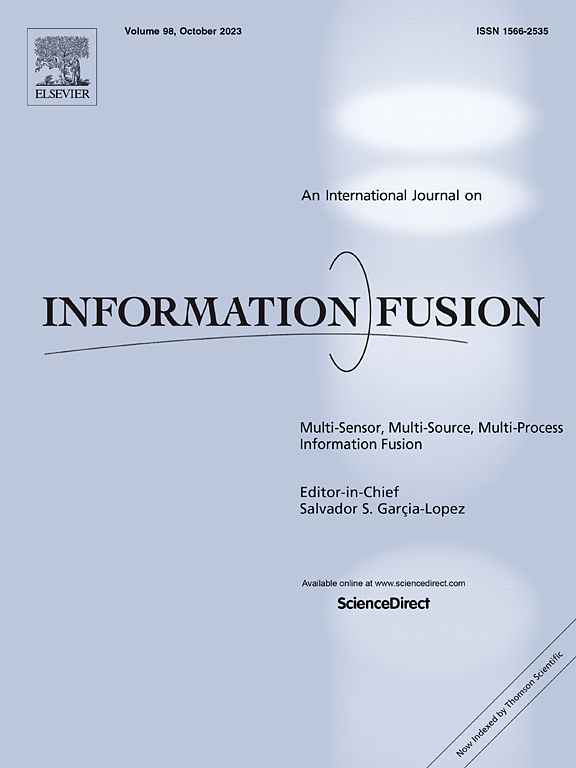QD-MSA : A quantum distributed tensor network framework for multimodal sentiment analysis
IF 14.7
1区 计算机科学
Q1 COMPUTER SCIENCE, ARTIFICIAL INTELLIGENCE
引用次数: 0
Abstract
Multimodal sentiment analysis, which integrates data types such as audio, text, and images, is increasingly vital for understanding emotional content in the era of social media and short video platforms. Quantum computing, with its inherent characteristics like superposition and entanglement, is conceptually well-suited for multimodal learning, particularly for modal fusion. However, current quantum computers face limitations, such as a restricted number of usable qubits, hindering their ability to surpass classical computing (quantum supremacy). In this work, we propose QD-MSA, a quantum distributed multimodal sentiment analysis framework, which is the first to apply quantum circuit splitting techniques to multimodal sentiment analysis, reducing qubit usage from to . This advancement enables the execution of more complex quantum programs on Noisy Intermediate-Scale Quantum (NISQ) devices by partially overcoming qubit scarcity. Additionally, QD-MSA contains a novel workflow that integrates our model into quantum computer clusters, significantly enhancing computational performance and unlocking the potential of NISQ-era quantum computers. By combining classical neural networks for feature extraction with quantum models for feature fusion, our approach conserves quantum resources while achieving superior performance. Experimental evaluations on the CMU-MOSEI and CMU-MOSI datasets demonstrate that our model achieves comparable or superior performance to deep learning-based methods, with notable improvements in key metrics. Furthermore, our work represents the first successful integration of quantum computing principles into multimodal sentiment analysis, with experiments confirming that the proposed model significantly outperforms classical approaches relying solely on quantum-inspired strategies. These contributions establish a scalable and efficient framework for multimodal sentiment analysis, leveraging both classical and quantum computing paradigms to advance the field.
多模态情感分析的量子分布张量网络框架
多模态情感分析集成了音频、文本和图像等数据类型,对于理解社交媒体和短视频平台时代的情感内容越来越重要。量子计算具有叠加和纠缠等固有特性,在概念上非常适合多模态学习,特别是模态融合。然而,目前的量子计算机面临局限性,例如可用量子比特的数量有限,阻碍了它们超越经典计算(量子霸权)的能力。在这项工作中,我们提出了量子分布式多模态情感分析框架QD-MSA,这是第一个将量子电路分裂技术应用于多模态情感分析的框架,将量子比特的使用从n减少到n/2+1。这一进步通过部分克服量子比特稀缺性,使更复杂的量子程序能够在有噪声的中等规模量子(NISQ)设备上执行。此外,QD-MSA包含一个新颖的工作流程,将我们的模型集成到量子计算机集群中,显着提高了计算性能并释放了nisq时代量子计算机的潜力。通过将经典神经网络特征提取与量子模型特征融合相结合,我们的方法在节省量子资源的同时取得了优异的性能。在CMU-MOSEI和CMU-MOSI数据集上的实验评估表明,我们的模型实现了与基于深度学习的方法相当或更好的性能,在关键指标上有显着改进。此外,我们的工作代表了首次成功地将量子计算原理集成到多模态情感分析中,实验证实,所提出的模型明显优于仅依赖量子启发策略的经典方法。这些贡献为多模态情感分析建立了一个可扩展和高效的框架,利用经典和量子计算范式来推进该领域。
本文章由计算机程序翻译,如有差异,请以英文原文为准。
求助全文
约1分钟内获得全文
求助全文
来源期刊

Information Fusion
工程技术-计算机:理论方法
CiteScore
33.20
自引率
4.30%
发文量
161
审稿时长
7.9 months
期刊介绍:
Information Fusion serves as a central platform for showcasing advancements in multi-sensor, multi-source, multi-process information fusion, fostering collaboration among diverse disciplines driving its progress. It is the leading outlet for sharing research and development in this field, focusing on architectures, algorithms, and applications. Papers dealing with fundamental theoretical analyses as well as those demonstrating their application to real-world problems will be welcome.
 求助内容:
求助内容: 应助结果提醒方式:
应助结果提醒方式:


